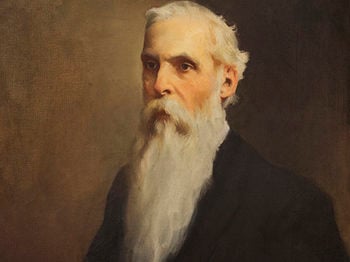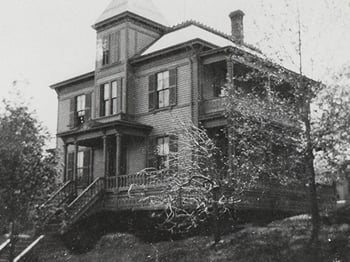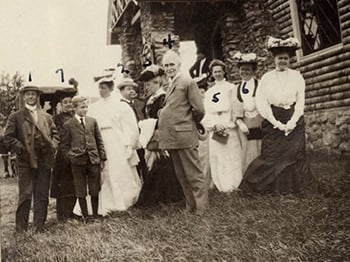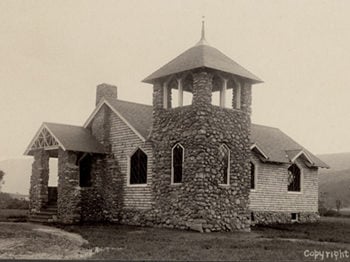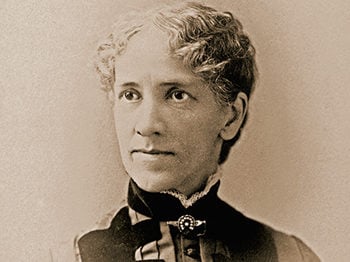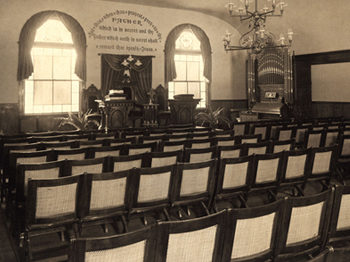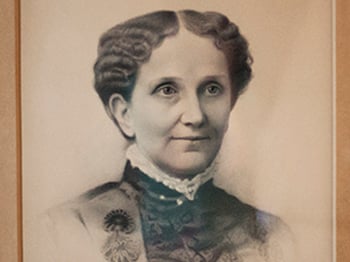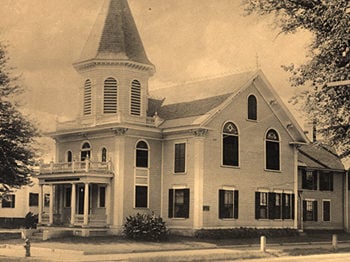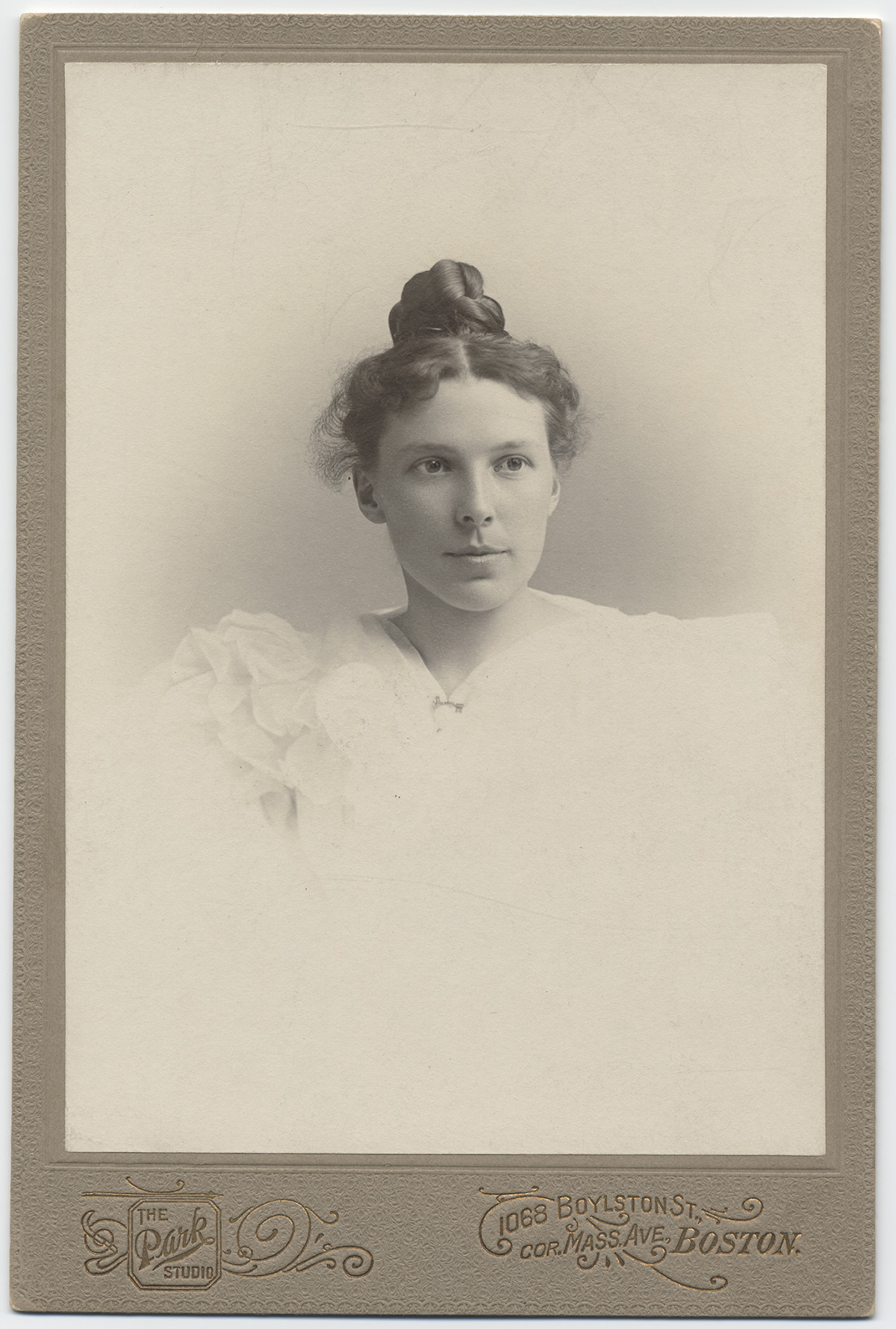
Even as a young woman, and throughout her life, Emma Shipman was a pioneering worker in the Christian Science movement. Her memoirs recapture something of the happiness and unselfed energy evident among the early and devoted followers who supported Mary Baker Eddy’s great work as the Discoverer, Founder, and Leader of Christian Science.
Miss Shipman’s forebears were religious people of English and Scottish-English descent, who helped to build their various communities in New Hampshire and Vermont. Emma’s paternal grandfather, the Reverend Isaiah Hatch Shipman, wrote on the flyleaf of his Cruden’s Concordance, “I believe the Bible is the inspired word of God. Oh, for a key to unlock these Scriptures!” How appropriate that, after his passing, his wife and five of his six children became students of Science and Health with Key to the Scriptures by Mary Baker Eddy.
For many years Mrs. Emily Shipman Wells, a daughter of Reverend Shipman and one of Emma’s aunts, had been a semi-invalid. In 1884 a traveling saleswoman stopped in Lisbon, New Hampshire, and spoke to her of the healing power of Christian Science. She recommended asking Julia Bartlett, a Christian Science practitioner in Boston, to help her. With much difficulty, Mrs. Wells traveled with her husband to Boston, where she was completely healed within two weeks. She was again able to enjoy going to concerts and shopping, which she had not been able to do for years. When news of Mrs. Wells’s healing reached her brother’s family in Montpelier, Vermont, his wife Nell Keith Shipman (another of Emma’s aunts) also decided to seek help in Christian Science. According to Emma, one of her aunt’s shoulders “had been in a plaster cast for years, and she had been told never to remove it.” But she soon removed the cast and was quickly and permanently healed. Nell’s husband was also healed at that time, of chronic sick headaches. Later, Nell and another of Emma’s aunts, Mrs. Mary E. Dillingham, took class instruction with Mrs. Eddy.
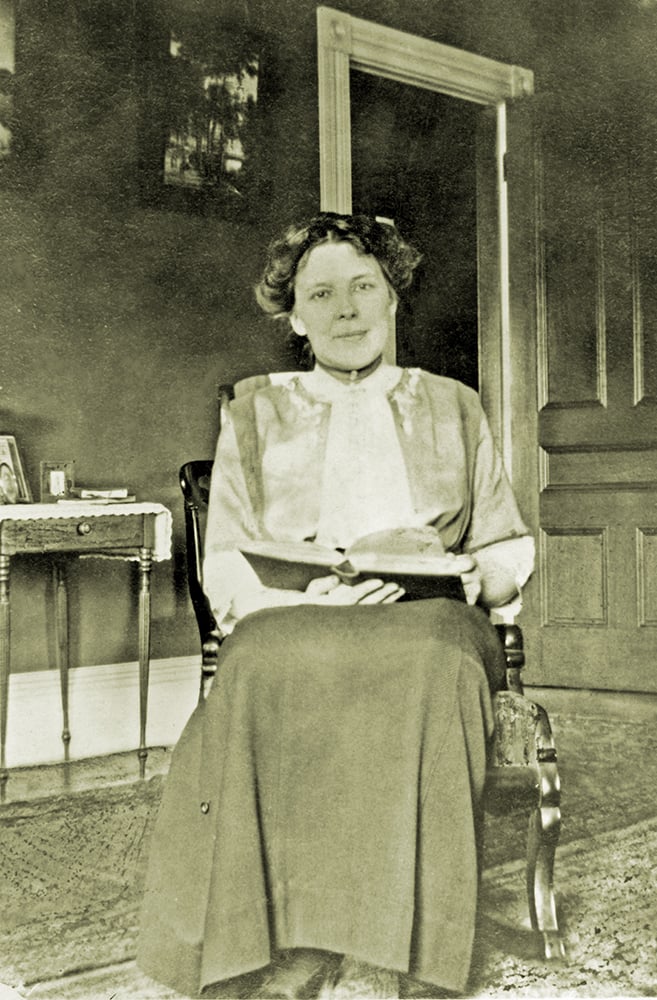
Not far from Lisbon is Lyman, New Hampshire, where Mr. and Mrs. Ira O. Knapp lived with their four children. Mrs. Knapp, too, was an invalid, and when news of Mrs. Wells’s healing reached them, Mr. Knapp arranged for a practitioner to come from Boston. Mrs. Knapp was healed of a long-standing illness, and Mr. Knapp of a slight indisposition. Four years later, when Mrs. Eddy was en route to visit the Knapps at Lyman, she called on Emma Shipman’s aunts in nearby Lisbon.
During this time, Emma Shipman lived in Danville, Vermont, near St. Johnsbury, more than a hundred miles from her aunts who had just been healed by Christian Science. Her story was a sad one: within only a few short years, thirteen-year-old Emma had lost five beloved members of her family, including her mother and a sister who was just a little older than herself.
Her father, James F. Shipman, was a farmer, as were most of the early settlers in New Hampshire and Vermont. He had won the respect of his community for his ability and judgment, and when a gift of one thousand acres of farming land was given to support a local hospital, the town authorities asked him if he would manage the farm. He sold his own farm and undertook the project, which he managed successfully and profitably for the benefit of the hospital. Emma’s sister, Dr. Julia Mary Shipman, a distinguished teacher, lecturer, geographer, and world traveler, said of their father, “He was a man much in demand.”
Emma first heard of Christian Science from her Aunt Chris — Mrs. C. C. Moore of Lisbon — who consoled the young girl after her sister Nellie passed on. She took Emma on her knee and explained to her that God does not send sickness, that He is Love and a good God. This gave her fresh hope.
Not long after this, Emma’s aunt Nell came to Danville for a visit with Emma. On the day of her arrival, James Shipman’s hand had gotten caught in the cogwheel of a machine and one finger was badly mangled. Only the absence of the doctor from town prevented the amputation of the finger that day. Nell gave her brother-in-law Christian Science treatment, and his finger was healed, leaving only a small scar. Some time later, he was healed of Bright’s disease and asthma, too.
Emma began to read the Christian Science textbook left by her aunt, and she also was healed of asthma, which had troubled her since she was seven, and of sick headaches. These were the first healings the young girl witnessed or experienced, and while her grasp of Science was slight, she later wrote that at the time, “I…was as absolutely convinced that it is the Truth as I am today.”
When she was ready to enter high school, Emma went to live with her aunts and grandmother at Lisbon. When her studies were completed, she was taken to Boston, where she intended to enter Wellesley College in nearby Wellesley, Massachusetts. At the time, however, the college still maintained a rule forbidding travel on Sunday, which would have prevented her from attending the Christian Science services in Boston. At her aunts’ suggestion, Emma entered Boston University’s College of Liberal Arts instead. On graduation, she became a teacher in the Brookline schools.
Miss Shipman’s enthusiasm for Christian Science grew during her university experience. She attended the Christian Science services which were held at Chickering Hall and later at Copley Hall on Clarendon Street — not far from where The Mother Church was being built. Friday evening meetings for readings, discussions, and testimonies of healing were held in Steinert Hall.
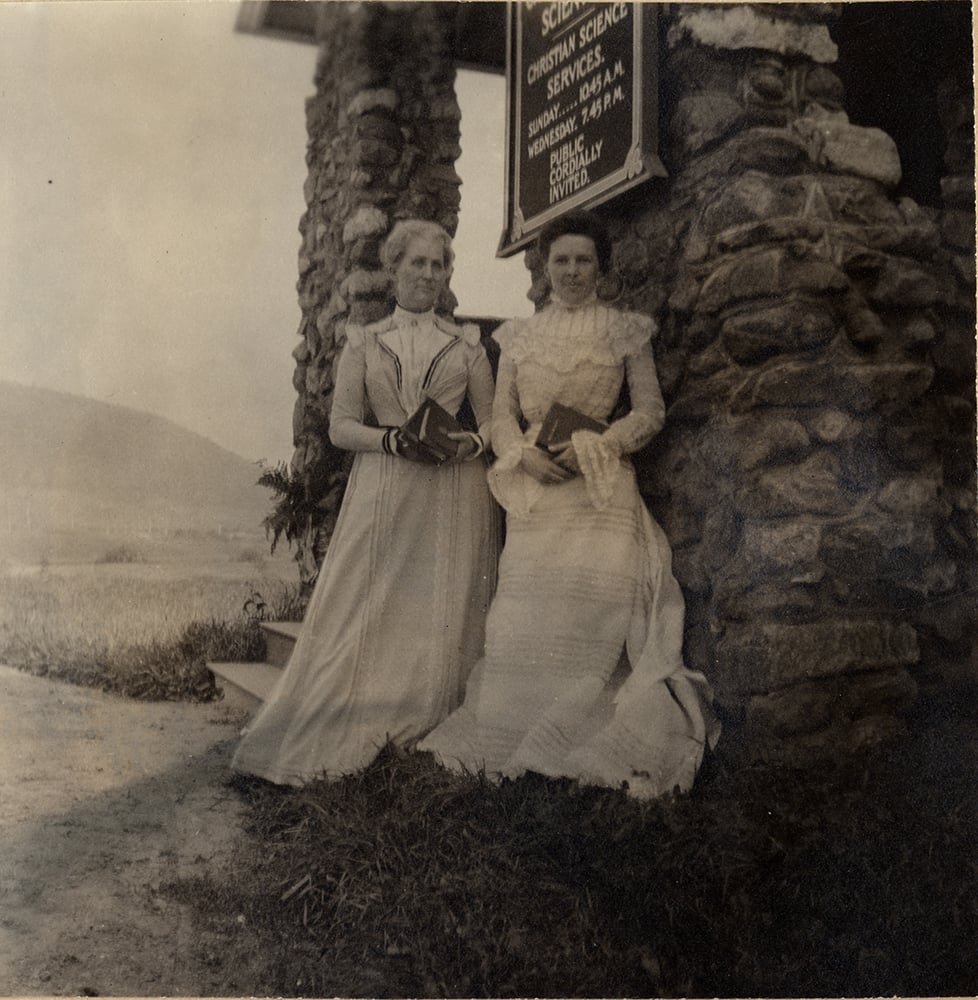
In September 1893, after withdrawing from the Congregational Church, she joined The Mother Church. That same year she received Primary class instruction. In January 1895, on the night before the dedication of The Mother Church she and other members, with broom and duster in hand, helped make the church ready for the next day’s services. A year later, she began teaching in The Mother Church Sunday School, where she gave devoted service almost without interruption for nearly fifty years. Between 1893 and 1898 Miss Shipman spent several summer vacations at the White Mountain House in Fabyan, New Hampshire, which Mrs. Eddy had visited in 1888. The hotel was operated by Mr. and Mrs. Royal D. Rounsevel, who were Christian Scientists. Many Scientists visited the hotel during the summer, and Christian Science services were held on Sundays in the parlor. Someone suggested that the group build a small church near the hotel for the benefit of summer visitors. Miss Shipman was asked to write Mrs. Eddy to see if she would approve of the proposed project. Mrs. Eddy, responding warmly through her secretary, Calvin Frye, on June 7, 1898, sent a one-hundred-dollar check for the building fund.
During the summer of 1898, the little church was ready for dedication, and Miss Shipman, as Secretary and Treasurer, sent Mrs. Eddy an invitation, written on birch bark, to attend the dedication. Mrs. Eddy’s reply was read by Miss Shipman at the service and may be found in The First Church of Christ, Scientist, and Miscellany, pages 184-186. It includes this timely prophecy: “The peace of Love is published, and the sword of the Spirit is drawn; nor will it be sheathed till Truth shall reign triumphant over all the earth.”
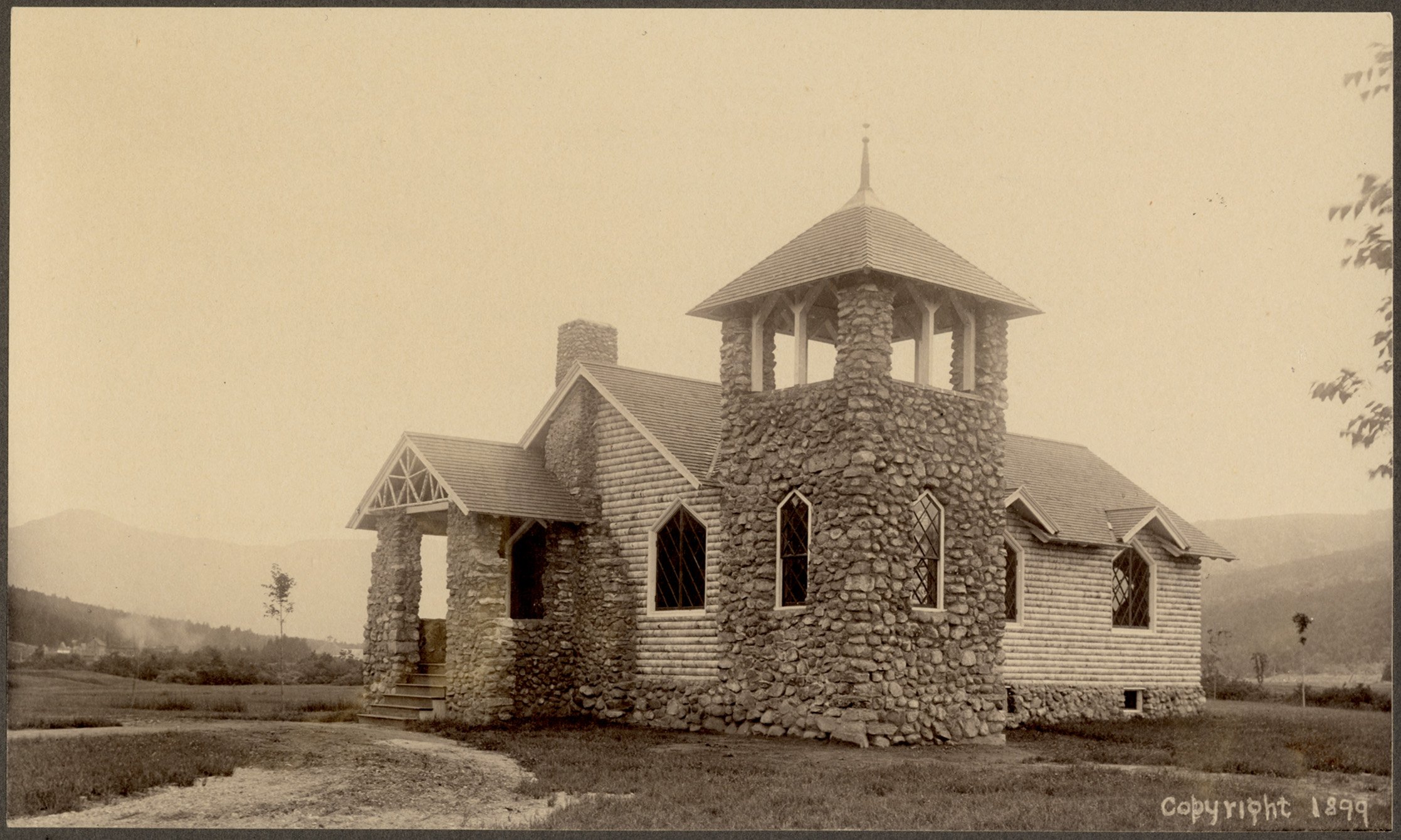
A few months after the dedication of the White Mountain Church, Miss Shipman received a telegram from Mrs. Eddy, bidding her to be at Christian Science Hall in Concord, New Hampshire, on the following day. While she had no idea what the summons was about, she never questioned it, but answered obediently. When she realized that the invitation was to attend Mrs. Eddy’s 1898 class, she was “too astonished to speak. I felt young and unprepared for such a blessing.” Her impression of that experience is preserved in the chapter on “Mrs. Eddy as a Teacher” in Clifford P. Smith’s Historical Sketches (pages 142-143). She says, in part, “When Mrs. Eddy came into the class, I experienced the feeling I always had on seeing her, of the greatness of the truth she taught and the self-effacement of the teacher.” The class lasted for two days and included two lessons.
After her arrival on Sunday morning, Miss Shipman attended the service in Christian Science Hall led by Ezra Buswell, who read from Luke 10, beginning, “After these things, the Lord appointed other seventy also…” At the close of the lessons, Mrs. Eddy met all the students in a small room adjoining the hall, where she greeted each one individually. To Emma Shipman she said, “So this is my little Mountain missionary.”
In her record of this class, Miss Shipman recalls that Mrs. Eddy talked much about the need for more love in healing, and that she was impressed by Mrs. Eddy’s faith in the immortality and vitality of Truth. In this connection, Miss Shipman’s inspiring comments on the 1898 Class, published in We Knew Mary Baker Eddy: First Series, are most rewarding to read.
Soon after this class, Mrs. Eddy sent word to Miss Shipman by James A. Neal, asking her to begin the practice of Christian Science. Her contract with the Brookline Schools did not expire until June 1899, but she never doubted that she would be able to comply with Mrs. Eddy’s request. By March she was able to arrange a substitute for the school, rent an office, and enter the practice of Christian Science. She was listed in The Christian Science Journal for almost sixty years.
In the fall of 1900 The Christian Science Board of Directors asked her to take charge of public Christian Science services at Wellesley College, mainly for the benefit of Wellesley students. Miss Shipman served as First Reader, and a college girl, Miss Mary V. Little of Memphis, Tennessee, was Second Reader. At Easter time in 1901, Miss Shipman asked the students to write Mrs. Eddy, telling her how Christian Science had helped them with their studies and in their daily lives. Mrs. Eddy took time to reply to the “Wellesley ‘nine,'” as she called them.
In 1901 Miss Shipman received a letter from Mr. Frye with a card from Mrs. Eddy, giving her the opportunity to attend the 1901 Normal class, to be taught by Edward A. Kimball. This privilege met the need she felt for greater knowledge in her practice.
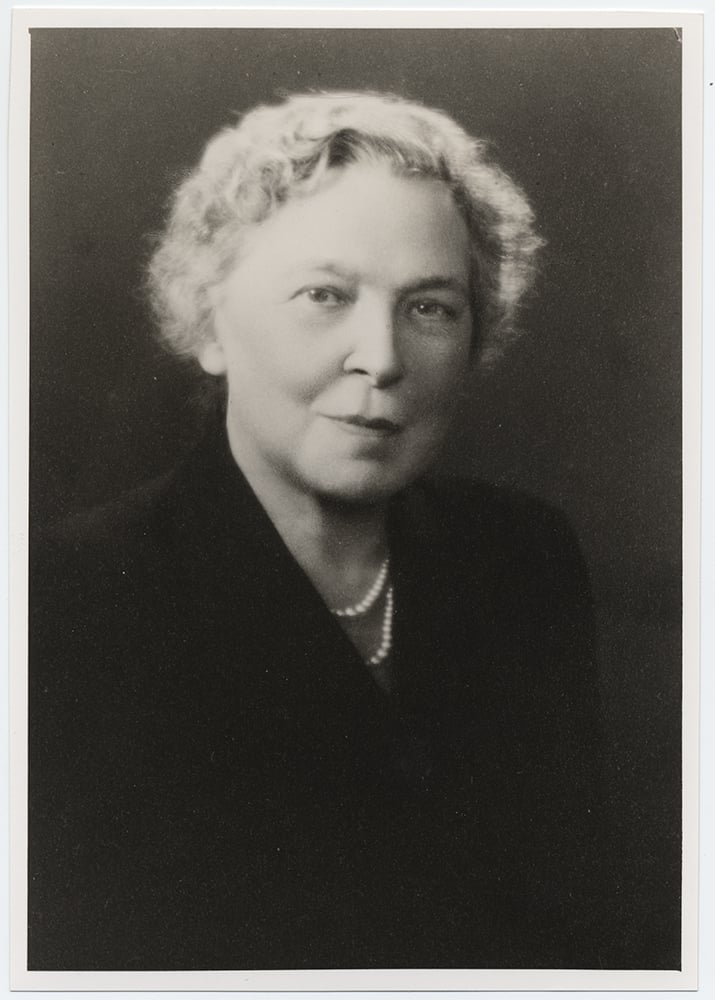
Emma Shipman recalled vividly Mrs. Eddy’s ringing message delivered to her many visitors from her balcony in 1903: “Trust in Truth, and have no other trusts” (see The First Church of Christ, Scientist, and Miscellany, page 171). Another blessing came to her in February, 1904, when she was invited to spend about five days at Pleasant View and saw Mrs. Eddy every day, sometimes twice a day. She became conscious of the great mother love expressed by Mrs. Eddy toward her household, and flowing on beyond to the whole world. She was much impressed by Mrs. Eddy’s method of work. “She watched, she prayed, and more than anyone I have come in contact with, she worked. Order, neatness, accuracy and dispatch characterized her methods,” Miss Shipman noted.
Emma Shipman’s first article, which describes the dedication of the White Mountain Church, was published in the Christian Science Weekly in 1898 (the Weekly’s title was changed after four months tothe Christian Science Sentinel). During her lifetime she wrote over fifty articles for the periodicals, including The Christian Science Monitor.
In 1949-1950 Miss Shipman served as President of The Mother Church, where she delivered two notable addresses, one at the time of her induction, the other when she retired. Her article, “The Healing Power of the True Concept of God” was translated into several languages for The Herald of Christian Science. Other articles were reprinted in the booklets titled “Work” and “Requirements in Christian Science Practice.”
Miss Shipman served on the Board of Trustees of the Longyear Foundation from 1924 to 1928, and on the Longyear Board of Visitors in 1929. During part of this period, she lived with Miss Alice Young in Mrs. Longyear’s studio cottage on Beecher Road, Brookline.
Emma Shipman’s life was devoted to the Cause of Christian Science. In a letter dated December 19, 1950, another pioneer worker, Daisette D. S. McKenzie, wrote to Miss Shipman: “Your quiet, loving, faithful, intelligent service to our Cause is treasured by many and many a heart.”
Notes
This article was originally published in the 1976 summer Quarterly News.
